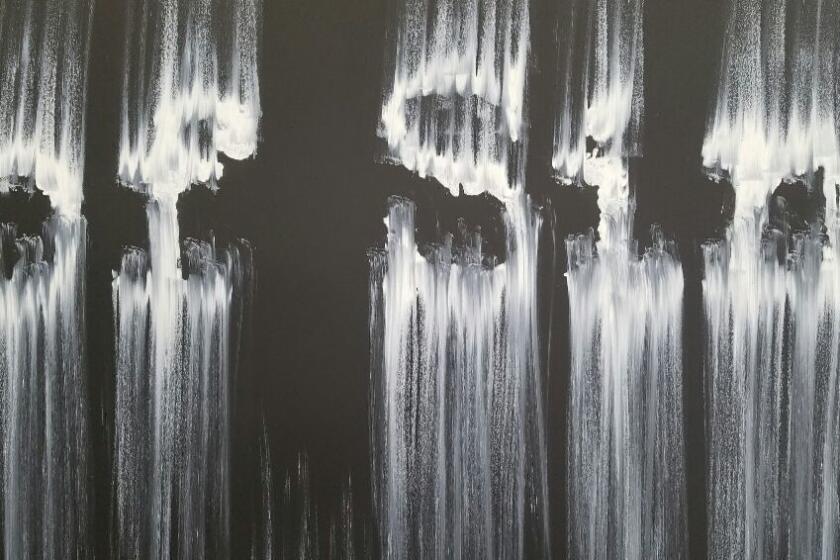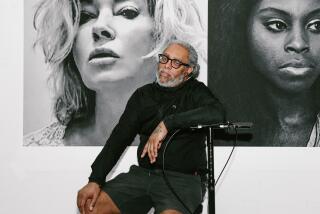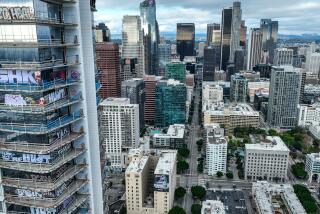Gary Simmons on how his artwork ‚Äėforces you to go down certain parts of memory lane‚Äô
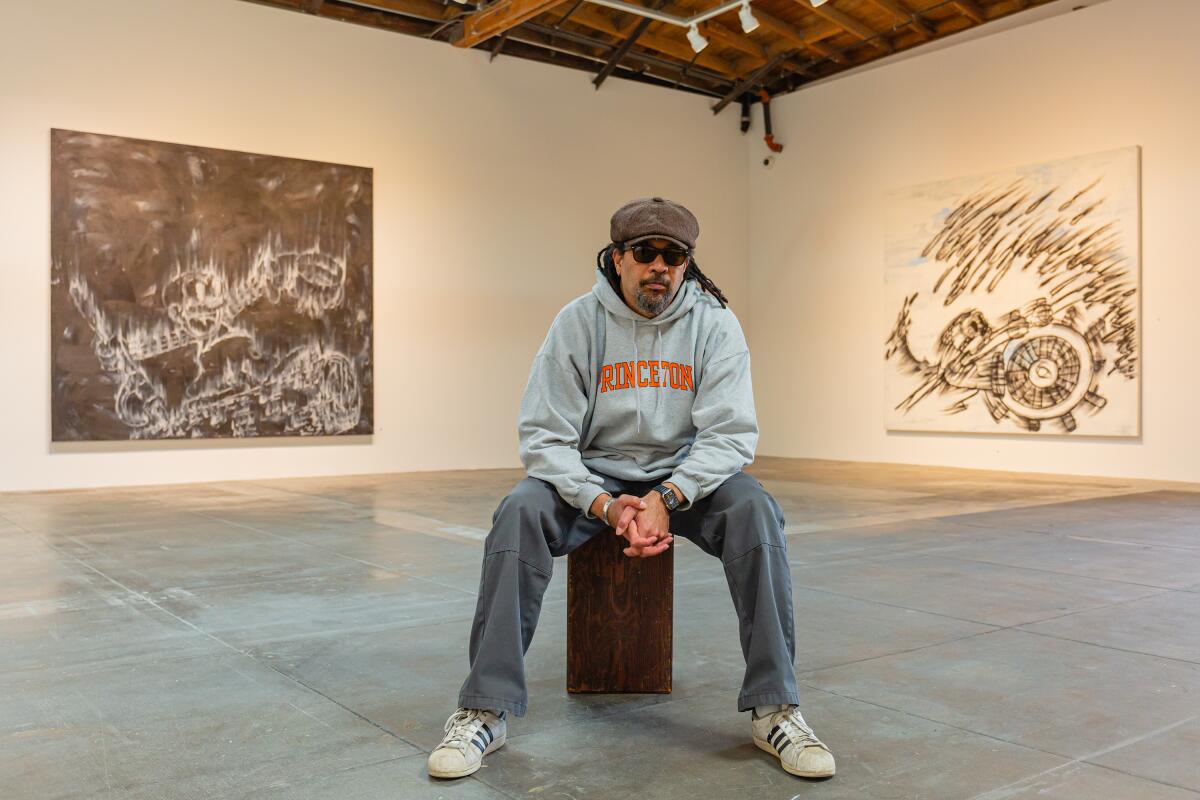
On April 9, under a blistering sun, poet Yesika Salgado recited tender odes to her childhood and scorching takedowns of former lovers in between passionate Spanish-language verses belted by balladeer San Cha. The two L.A.-based acts were the latest artists to perform in the Black Ark series, a slate of free, public, live events set in the outdoor courtyard of the Hauser & Wirth gallery complex.
Salgado‚Äôs poems delved into a lifetime of memories, making for a perfect complement to the work of artist Gary Simmons, whose sculptural installation ‚ÄúRecapturing Memories of the Black Ark‚ÄĚ serves as the event stage. By the end of the performance, Simmons stood on the front row, applauding fervently.
‚ÄúIt was amazing! It was so hard-hitting,‚ÄĚ he says. ‚ÄúThis is exactly what I wanted to have happen on the Ark. That‚Äôs what the Ark represents: Do your thing!‚ÄĚ
He created the circulating performance space in 2014, using scrap materials found in New Orleans in the wake of Hurricane Katrina. During the work‚Äôs early 2022 residency in the Arts District courtyard, dance icon Savion Glover has tapped across the wooden stage and Simmons‚Äô teenage daughter delivered an original monologue. The program for April 24 is a Monday Evening Concerts performance of Tyshawn Sorey‚Äės composition tributing experimental music luminary George Lewis. And for the May 21 series finale, KCRW‚Äôs Elvis Mitchell will join Simmons onstage for a Q&A.
The Ark serves as a companion piece to ‚ÄúRemembering Tomorrow,‚ÄĚ a collection of drawings, paintings and sculptures installed inside Hauser & Wirth‚Äôs two north galleries through May 22. These works explore race, identity and nostalgia. Using 1930s animated characters Bosko and Honey as primary muses, and employing a line-blurring erasure technique that has become his calling card, Simmons both wipes away and calls attention to racist imagery of the past.
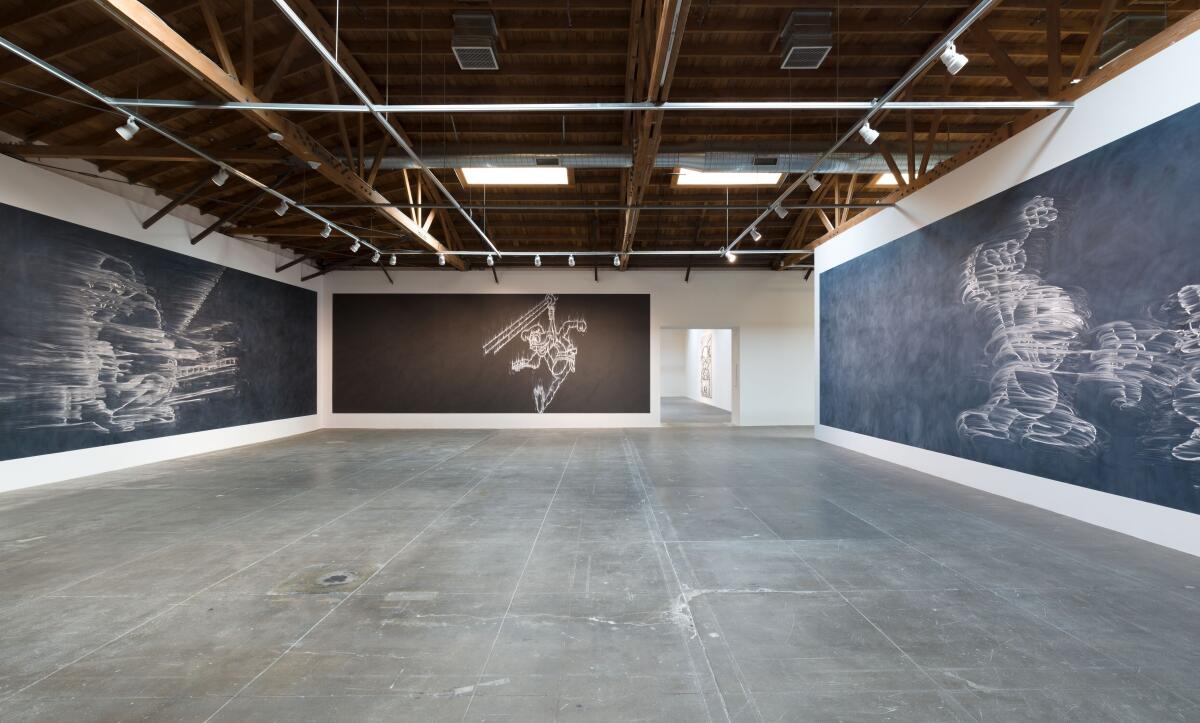
We spoke with Simmons about the joint installations and the importance of contextualizing memories. This conversation has been edited for length and clarity.
How did the Black Ark performance space come to be?
Originally, the Ark was made for a show in New Orleans, Prospect. I love New Orleans. There’s nobody that matches those folks as far as strength, pride and beauty. The devastation still exists in places like the Tremé. I was really drawn to the beauty of the trauma. I wanted to do something with the shards and remains of what was left from Katrina and make something positive out of it. I decided to make this sound system that would be a platform for other creative folks to perform on. I really just wanted to provide this sculptural space that is activated by other artists.
What do you feel is the link between the outside structure and the exhibition inside the gallery?
In a lot of ways, this show is almost like a museum show because you have a sampler of pretty much every form that I work in. It starts with drawing, goes into painting in different sizes and scale, then it goes into those massive wall drawings. And then you end with the object, which is the cafeteria tables. Then you come outside and the Ark really activates the courtyard. It’s like this controlled, almost park environment, and when there’s a performance, it really becomes this intimate space between the performer and the audience. I love the exchange. I would say that the common theme between inside and outside is exchange. It’s all about that kind of free flow between artist and audience.
How did you come to incorporate cartoon characters like Honey and Bosko into your work?
It was a progression. I was interested in making a film early on. I wasn‚Äôt sure what kind, but I knew I wanted to work with education ‚ÄĒ how children are taught, how they learn. I started to think about the cartoons that parents would sit you down in front of then walk away, almost letting the television babysit you. I was looking at ‚ÄúDumbo.‚ÄĚ The crows had this prominent role in teaching Dumbo how to fly, but they were highly racialized and very stereotypical. I talked to a cross-section of different people about their memories of ‚ÄúDumbo‚ÄĚ and I realized that the memories kind of broke down along racial lines. And I thought, ‚ÄúWow, this is very interesting that people that look like me remember the racialized racist images and white folks didn‚Äôt.‚ÄĚ
I started drawing cartoons on a chalkboard surface, then erasing them, or attempting to erase them. The chalkboard represented education, learning, teaching and bits of nostalgia. I was drawn to Bosko because there‚Äôs such a closeness to Mickey Mouse. I started to work with Bosko somewhere in the mid-‚Äė90s, to do this attempt at erasing a stereotype. Speed forward. I looked at some of that earlier work and started to realize I‚Äôm not really done with that area of exploration.
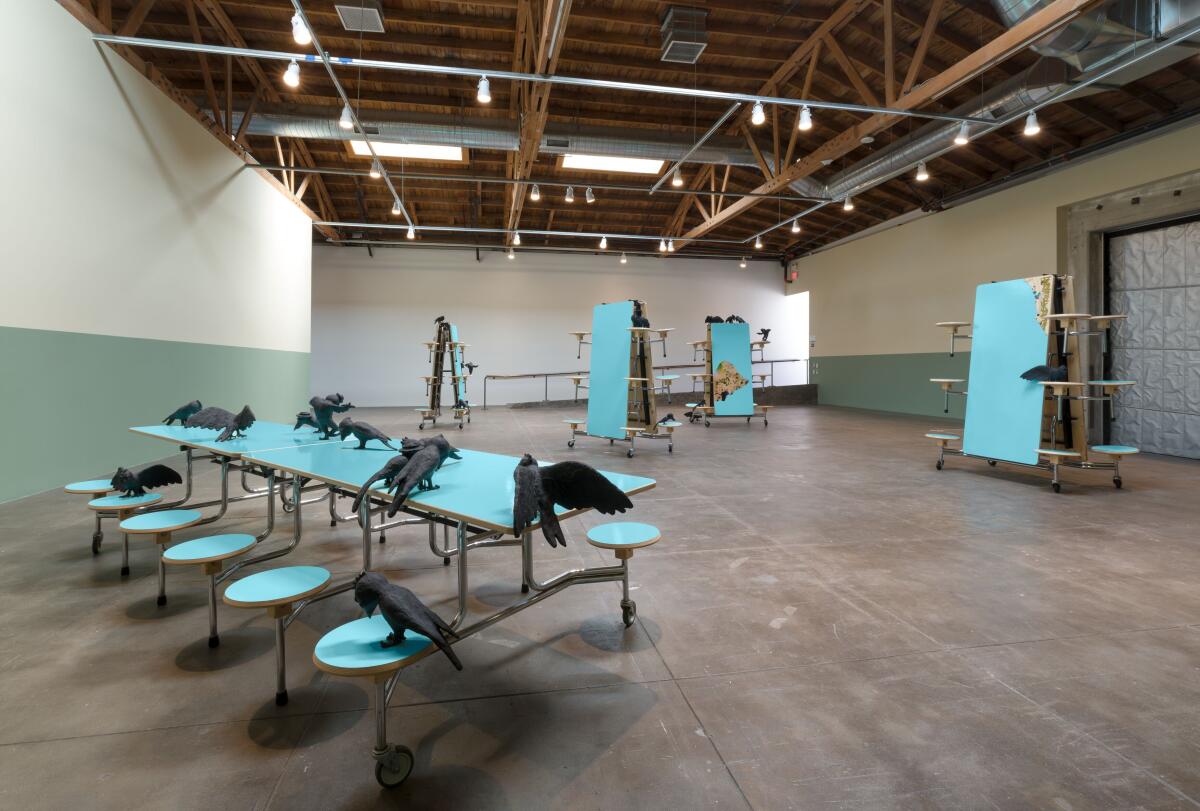
Memory is such an important part of your work. What sorts of emotions do those bits of nostalgia evoke in you?
I’m not entirely sure that every single one of those cartoons were meant with some nefarious undertone to them. I still look at Bugs Bunny cartoons. Are they funny? Hell, yeah! But at the same time, there’s jungle bunnies and all kinds of harsh stuff. Yes, they are racist, but I don’t think that they were intended to make people feel bad about themselves, necessarily. I think it’s a lot more complex than that. You have to put it into context.
That‚Äôs the teeth of [my] work, this attempt at erasing that stereotype, that pain, that anger, that rage. That‚Äôs what that blurring is all about. It hovers between the representation of the image and the abstraction. That‚Äôs why I feel that work is so powerful; it creates that sort of uncertainty. There‚Äôs those slippages and traces that exist that call on the viewer to complete the visual circuitry and the conceptual circuitry ‚ÄĒ their relationship to those images, whether it be guilt or horror or whatever it is. The work forces you to go down certain parts of memory lane. It nudges you into rethinking how certain images came into your life, what they meant and what they mean now.
'Remembering Tomorrow' and 'Recapturing the Black Ark'
Where: Hauser & Wirth, 901 E. 3rd St., downtown Los Angeles
When: 11 a.m.-6 p.m. Tuesdays-Sundays. Ends May 22.
Info: hauserwirth.com, (213) 943-1620
More to Read
The biggest entertainment stories
Get our big stories about Hollywood, film, television, music, arts, culture and more right in your inbox as soon as they publish.
You may occasionally receive promotional content from the Los Angeles Times.
